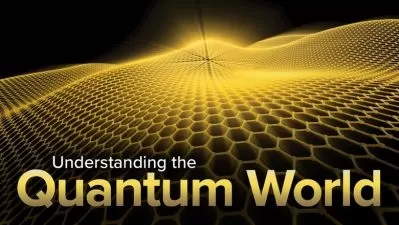Signals and Systems: From basics to advance(Course-1)
Examekalavya Technical
13:37:38
Description
Fundamentals of signal processing in Continuous time domain and in Discrete time domain
What You'll Learn?
- Basic definitions of Continuous and discrete signals and opertions on time
- Periodic and aperiodic signals
- Energy and power signals
- Even and odd signals
- Singularity functions like unit impulse, unit step and unit impulse signals
- System defintion and properties
- Basic convolution in continuous and discrete time domains
Who is this for?
More details
DescriptionThis is an undergraduate course on signals and systems. This course is first one in a series of two courses on basics of signals and systems
For any electrical, electronics, Instrumentation or bio-medical engineering student understanding basics of signals in continuous time(CT) domain and in discrete time(DT) domain is a must. This course gives an in-depth coverage of all the fundamentals required for signal processing in both the domains. This can also be taken as a refresher course to understand 'Digital signal processing'.
The organisation and coverage of topics is as follows:
Introduction to signals: This module begins with basic definition of signal and system. The primary classification of signals and independent variables in signal representation are well explained. Then we will move on to the operations performed on independent variable like time and their order of precedence.
Classification of signals: Periodic and aperiodic signal classification is explained with sinusoidal signals and real exponential signals in detail. Another classification energy and power signals is given with all necessary examples. Finally, even and odd signals classification and its extension conjugate symmetric and conjugate anti symmetric signal classification is explained.
Standard signals: An in-depth coverage of singularity functions like unit-impulse, unit-step and unit-ramp signals are given in this chapter. All these signals are defined graphically and mathematically in both CT and DT domains. Properties of signals and relation between singularity functions is also explained. And other signals like signum function, sinc function etc., are also covered.
System properties: All the system properties that is Linearity, time invariance, causality, stability, memory and invertibility are well explained with standard examples.
About Author:
Mr. Udaya Bhaskar is an undergraduate university level faculty and GATE teaching faculty with more than 16 years of teaching experience. His areas of interest are signal processing, semiconductors, digital design and other fundamental subjects of electronics. He trained thousands of students for GATE and ESE examinations.
Who this course is for:
- Undergraduate engineering students with Electrical engineering, Electronics engineering, Biomedical engineering, Instrumentation engineering as specialisation
- Diploma/Polytechnic students with Electronics engineering, Communication engineering, Instrumentation as specialisation
- GATE and PSU preparing students
- Any Electronics or communication engineer who wants strengthen signal processing fundamentals
This is an undergraduate course on signals and systems. This course is first one in a series of two courses on basics of signals and systems
For any electrical, electronics, Instrumentation or bio-medical engineering student understanding basics of signals in continuous time(CT) domain and in discrete time(DT) domain is a must. This course gives an in-depth coverage of all the fundamentals required for signal processing in both the domains. This can also be taken as a refresher course to understand 'Digital signal processing'.
The organisation and coverage of topics is as follows:
Introduction to signals: This module begins with basic definition of signal and system. The primary classification of signals and independent variables in signal representation are well explained. Then we will move on to the operations performed on independent variable like time and their order of precedence.
Classification of signals: Periodic and aperiodic signal classification is explained with sinusoidal signals and real exponential signals in detail. Another classification energy and power signals is given with all necessary examples. Finally, even and odd signals classification and its extension conjugate symmetric and conjugate anti symmetric signal classification is explained.
Standard signals: An in-depth coverage of singularity functions like unit-impulse, unit-step and unit-ramp signals are given in this chapter. All these signals are defined graphically and mathematically in both CT and DT domains. Properties of signals and relation between singularity functions is also explained. And other signals like signum function, sinc function etc., are also covered.
System properties: All the system properties that is Linearity, time invariance, causality, stability, memory and invertibility are well explained with standard examples.
About Author:
Mr. Udaya Bhaskar is an undergraduate university level faculty and GATE teaching faculty with more than 16 years of teaching experience. His areas of interest are signal processing, semiconductors, digital design and other fundamental subjects of electronics. He trained thousands of students for GATE and ESE examinations.
Who this course is for:
- Undergraduate engineering students with Electrical engineering, Electronics engineering, Biomedical engineering, Instrumentation engineering as specialisation
- Diploma/Polytechnic students with Electronics engineering, Communication engineering, Instrumentation as specialisation
- GATE and PSU preparing students
- Any Electronics or communication engineer who wants strengthen signal processing fundamentals
User Reviews
Rating
Examekalavya Technical
Instructor's Courses
Udemy
View courses Udemy- language english
- Training sessions 119
- duration 13:37:38
- Release Date 2023/04/11

















